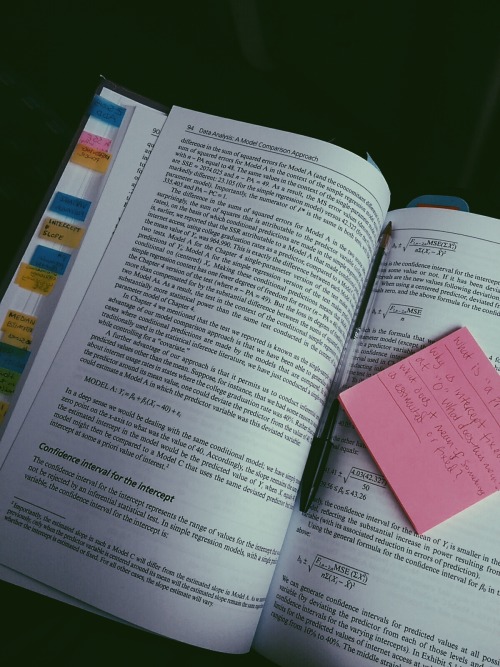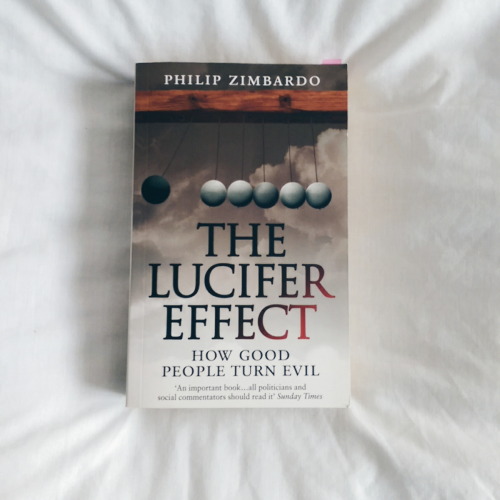#studyblrsofcolor
Bookmark Printables (via Google Drive)
Would you guys be interested in free bookmark printables?
I’ve never done these before so feedback would be appreciated (good or bad!). If you guys like these then I could maybe make a better (more pretty) series or even custom ones.
Post link
7:40am // Gloomy Sunrise - Studygram: @studyingbrains
Revising early in the morning on the train before my last statistics exam. I really struggled all throughout this module. I’ve learnt a big lesson though; if the first lecture leaves you dumbfounded then know at the end of the module you’ll definitely have learnt something.
Post link
Morning Session // Writing up project proposals…
I actually enjoy getting on campus early in the morning, before too many students are around. It gives me time to ease myself into the day (and eat my apple in peace). These pretty red chairs are super comfy too.
Follow my Studygram for more: studyingbrains
Post link
07:00 || Lone mornings in the library.
As the term is only just kicking off, nobody attends the libraries early in the morning. Allowing me to bask in silence!! The above images are taken in The Flaxman Gallery inside the Main Library at University College London.
Follow my Studygram: studyingbrains
Follow my Twittertoo!
Post link
Assignment Checklist Free Printable (PDF in Google Drive)
Keep your assignments looking professional and academic with these checklists that are used once you have completed a piece of work.
Tick off each task to make sure your work is of a presentable standard, for example:
- Single/Double spacing.
- Hanging indent for references.
- Completing title pages; Title, student ID, module code & name.
- Consistent font and font size.
- …And feel free to add your own tasks specific to your course too.
- Bonus: Box at the bottom has common reference styles (MLA, APA, Harvard).
I usually print these, cut them out and keep one with each assignment. It saves me time having to Google what’s required when referencing University/College work. If you can’t print then just write it out on paper/sticky notes. Let me know if this is helpful (and where to improve!).
More help: MLA Referencing//APA Referencing//Harvard Referencing
Follow my Studygram: studyingbrains
Follow my Twittertoo!
Post link
05:00 // The morning sun & a great textbook.
My lecturer gave me a great book “The Biology of Psychological Disorders” by David Linden. It covers so much and the info is easily digestible. I’m a little upset because I really flopped the exam on this topic which has put me off attempting to learn the material again. Never thought an exam would leave me triggered like this. Also, studying under the sun is nice. The warmth kisses my hands as I write and the white paper blinds me into oblivion… Lovely.
Post link
Neuroscientist captures an MRI of a mother and child
Professor Rebecca Saxe (MIT) has taken the first ever MR image of a mother and child.
“This picture is an MR image of a mother and a child that I made in my lab at MIT. You might see it as sweet and touching… an image of universal love. We can’t see clothes or hairstyles or even skin colour. From what we do see, the biology and the brains, this could be any mother and child or even father and child at any time and place in history; having an experience that any human can recognise.
Or you might see it as disturbing, a reminder that our human bodies are much too fragile as houses for ourselves. MRI’s are usually medical images and often bad news. Each white spot in that picture is a blood vessel that could clog, each tiny fold of those brains could harbour a tumour. The baby’s brain maybe looks particularly vulnerable pressed against the soft thin shell of its skull.
I see those things, universal emotions and frightening fragility but I also see one of the most amazing transformations in biology.”
Post link
9:00 // Royal Holloway, University of London is beautiful.
I’ve been running experiments with a masters student using fMRI (functional magnetic resonance imaging). I also got an updated scan of my own brain. Nice nice.
Some cool stuff about fMRI experiments:
- Glasses can’t be worn in the scanner (because they contain metal) so you get to wear these sexy specs instead. The lenses that work best for you are slotted in. They’re like swimming goggles.
- People who wear the hijab or a turban can go in the scanner with their head coverings on. Yay! All pins,metals and hair ties need to be removed though.
- Experiments in fMRI tend to have a maximum running time of 90 minutes.
- There is a panic button (looks like a pump) given to participants in the scanner, if you ever want to leave the scanner all you have to do is press it.
- If it’s not given by default you can ask to have a copy of your brain scan. Download a free software called Mango and play around with your brain!!
- The equipment tends to look old - our comps run Windows XP. You’ll see this in science quite a bit and think “why don’t they update??”. Operating systems (Windows/MAC OS) sometimes have updates that tamper with medical software and it can be hard to pinpoint what’s gone wrong. So if it’s working we don’t update it until there’s a reason on our part e.g. when it breaks.
Follow my Studygram: studyingbrains
Follow my Twittertoo!
Post link
Book Recommendations: Books that have helped me think and write critically when it comes to scientific literature. I’ve never gotten below a 4.0/1st in a lab report.
This post will be especially helpful for those taking psychology, neuropsychology, neuroscience, cognitive neuroscience, pharmacy etc. All books are written by world leading academic researchers and are very well referenced.
Bad SciencebyDr Ben Goldacre - 342pgs, Age 11+.
If there is a book on this list that you read, let it be this! Dr Goldacre focuses on the misuse of science by journalists, homeopaths, schools and big pharmaceutical companies. The book has a great segment on understanding “The Placebo Effect”. Other topics include; Brain Gym, misleading cosmetic adverts, issues with vitamin pills and “toxins”. He has a blog he runs Badscience.net that has great free articles! The book is beautifully referenced and really easy to read, definitely worth investing in. If you can’t spend money on the book just yet, there is a similar free talk here.
Drugs: Without the Hot AirbyProf David Nutt- 316pgs, Age 12+.
Prof Nutt incurred the wrath of the UK government when he put forth research papers stating that alcohol and tobacco were more harmful than many illegal drugs, including LSD, ecstasy and cannabis. In “Drugs”, he talks us through the science of what drugs are and how they work, quantifying and comparing the harms caused by different drugs, as well as drug addiction. This book is a great starting point and has educated me on all major drugs better than any textbook has. It’s written in simple English with numerous references and even has a wonderful segment titled “What should I tell my kids about drugs?”. I have had the pleasure of meeting Prof Nutt multiple times and given the slander he has endured, he remains passionate and dedicated to his field. Prof Nutt runs a website aimed at the general public Drugscience.org. There is a similar free talk here.
Bad PharmabyDr Ben Goldacre - 404pgs, Age 15+.
Another gem by Dr Goldacre, this is a slightly heavier text than the above two books but is a must read for those going into pharmacy or research. Bad Pharma explains where new drugs come from and issues with missing data in clinical trials. Companies run bad trials on their own drugs, which distort and exaggerate the benefits by design. When these trials produce unflattering results, the data is simply buried. Dr Goldacre discusses the issues with design and also the harms of not making the missing trial data available. This book is not ‘anti-drug’, this book highlights issues with publication bias and how this needs to be and can be mended in order for doctors and patients to make better informed decisions on the drugs they are prescribing/prescribed.There is a similar free talk here.
The Man who Mistook his Wife for a HatbyDr Oliver Sacks - 246pgs, Age 11+.
Written by the late Dr Oliver Sacks, this was the first book I purchased at the age of 13 in the field of neurology that made me go nuts for the brain. As a huge fan of Roald Dahl’s style, this book was just perfect. Dr Sacks turned patient case studies into short stories, inviting you into the incredible world of neurological disorders. The following phenomena are covered: visual agnosias, memory loss, Parkinsonion-symptoms, hallucinations etc. Dr Oliver Sacks has multiple books that are worth investing in, have a look at Oliversacks.com. There is a similar free talk here.
Phantoms in the BrainbyDr V. S. Ramachandran - 257pgs, Age 15+.
Ramachandran, through his research into brain damage, has discovered that the brain is continually organising itself in response to change. Phantoms in the Brain explores case studies and experiments invented by Dr Ramachandran like the Mirror Box to help understand the underlying issues. Examples of the case studies involve a woman who persists that her left arm is not paralysed (albeit her entire leftside is paralysed) and a young man loses his right arm in a motorcycle accident, yet he continues to feel a phantom arm with vivid sensation of movement. In a series of experiments using nothing more than Q-tips and dribbles of warm water the young man helped Dr Ramachandran discover how the brain is remapped after injury. This book is really enjoyable and is a slightly more in-depth read than The Man who Mistook his Wife for a Hat. There is a similar free talk here.
The Lucifer EffectbyDr Philip Zimbardo - 488pgs, Age 18+ (due to explicit images).
Prof Zimbardo provides an in-depth analysis of his classic Stanford Prison Experiment, and his personal experiences as an expert witness for one of the Abu Ghraib prison guards, raising fundamental questions about the nature of good and evil. This book has really interesting commentaries on The Columbine Shooting, People’s Temple Mass Suicide, Prison Abuse in Afghanistan etc. I enjoyed the book but it does get really repetitive (it definitely could have been made shorter by 100 pages), the publishers also use a really small font. There is a similar free talk here.
Ages have been mentioned not as restrictions but as guidelines in terms of the writing style and sensitivity of the literature. Every book mentioned above doesn’t need to be read chronologically, from cover-to-cover. They have been compiled in such a way that you can dip in and out of the chapters without confusion. Lovely! All free talks are given by the authors and they cover the same topics that are mentioned in the books.
If you ever wish to discuss the literature, do get in touch with me! Twitter|Instagram
Post link




















